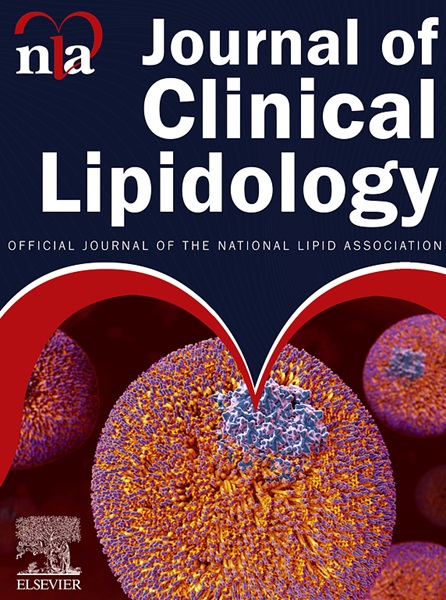Patients’ and families’ virtual care experiences for hypercholesterolemia management during the COVID-19 pandemic
IF 4.6
3区 医学
Q2 PHARMACOLOGY & PHARMACY
引用次数: 0
Abstract
BACKGROUND
Virtual care (VC) in an ambulatory pediatric lipid clinic was rapidly implemented in response to the COVID-19 pandemic, prompting health evaluation and to inform future care planning.
OBJECTIVE
To assess the impact of VC by analyzing longitudinal changes in lipid profiles and exploring patients’ and parents’ experiences through surveys and interviews.
METHODS
A descriptive, mixed-methods approach examined lipid biomarkers from patients who attended both in-person and VC appointments at a pediatric hospital in Toronto, Canada from 2020 to 2024. This included a retrospective chart review, postpandemic parent survey, and semi-structured interviews. Generalized estimating equations (GEE) were used to model repeated non-high-density lipoprotein (non-HDL) cholesterol levels over time, examining associations with the number of VC visits. The Six-Pillar Framework for VC guided the interview development and qualitative content analysis.
RESULTS
Among the 150 patients (mean age 11 years, SD = 3; 49% female), the trajectory of non-HDL cholesterol levels over time did not significantly differ between those with >3 VC visits and those with fewer visits. However, suboptimal lifestyle behavior patterns were associated with higher non-HDL cholesterol levels. Qualitative data (9 patients, 10 parents) revealed 4 themes: (1) convenient but less effective, (2) managing physical and psychosocial health, (3) situational acceptance, and 4) participant recommendations.
CONCLUSIONS
While VC visit frequency alone was not associated with significant changes in non-HDL cholesterol over time, lifestyle factors remained important predictors of lipid outcomes. Recommendations suggested the importance of considering factors such as families’ knowledge, privacy, availability of technology, and internet accessibility when planning VC.
COVID-19大流行期间患者和家属高胆固醇血症管理的虚拟护理体验
背景:为应对COVID-19大流行,在儿科脂质门诊迅速实施了虚拟护理(VC),促进了健康评估并为未来的护理规划提供了信息。目的:通过调查和访谈,分析脂质谱的纵向变化,了解患者和家长的经历,以评估VC的影响。方法:采用描述性混合方法检测了2020年至2024年在加拿大多伦多一家儿科医院进行面对面和VC预约的患者的脂质生物标志物。这包括回顾性图表审查、大流行后父母调查和半结构化访谈。使用广义估计方程(GEE)来模拟随时间重复的非高密度脂蛋白(non-HDL)胆固醇水平,检查与VC访问次数的关系。VC的六支柱框架指导访谈开发和定性内容分析。结果:150例患者中,平均年龄11岁,SD = 3;(49%女性),非高密度脂蛋白胆固醇水平随时间的变化轨迹在bbbb3vc访问者和较少访问者之间没有显著差异。然而,不理想的生活方式行为模式与较高的非高密度脂蛋白胆固醇水平有关。定性数据(9例患者,10名家长)揭示了4个主题:(1)方便但效果较差;(2)管理身体和心理健康;(3)情景接受;(4)参与者建议。结论:虽然VC访问频率单独与非高密度脂蛋白胆固醇随时间的显著变化无关,但生活方式因素仍然是脂质结局的重要预测因素。建议建议在规划风险投资时考虑家庭知识、隐私、技术可用性和互联网可及性等因素的重要性。
本文章由计算机程序翻译,如有差异,请以英文原文为准。
求助全文
约1分钟内获得全文
求助全文
来源期刊
CiteScore
7.00
自引率
6.80%
发文量
209
审稿时长
49 days
期刊介绍:
Because the scope of clinical lipidology is broad, the topics addressed by the Journal are equally diverse. Typical articles explore lipidology as it is practiced in the treatment setting, recent developments in pharmacological research, reports of treatment and trials, case studies, the impact of lifestyle modification, and similar academic material of interest to the practitioner.
Sections of Journal of clinical lipidology will address pioneering studies and the clinicians who conduct them, case studies, ethical standards and conduct, professional guidance such as ATP and NCEP, editorial commentary, letters from readers, National Lipid Association (NLA) news and upcoming event information, as well as abstracts from the NLA annual scientific sessions and the scientific forums held by its chapters, when appropriate.

 求助内容:
求助内容: 应助结果提醒方式:
应助结果提醒方式:


